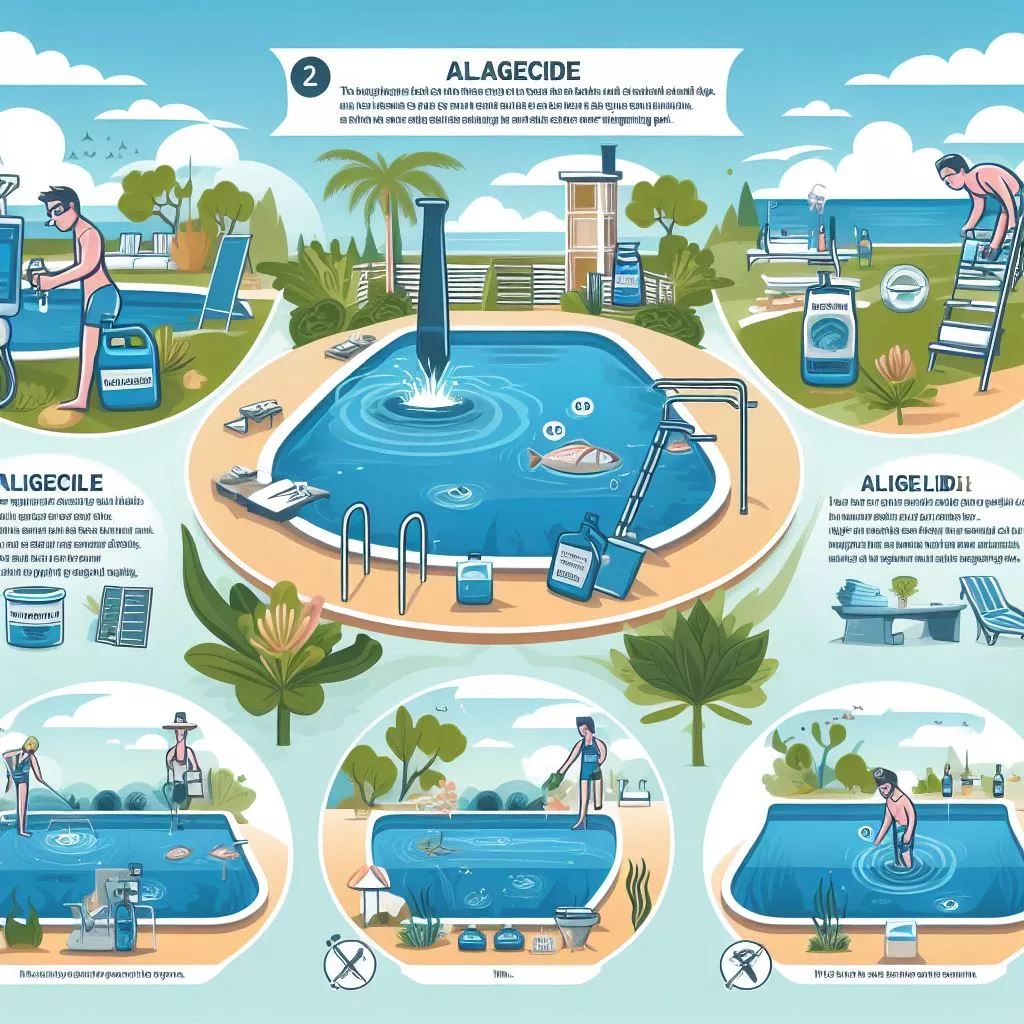The effective use of algaecides is a frequently overlooked aspect of swimming pool maintenance. The rapid growth of algae can quickly transform a once pristine pool into a deep shade of green. For pool owners and operators, the correct use of algaecides is of utmost importance. This article analyzes the complexity of algaecide application and delves into discussions on how to make the pool cleaner and more attractive. From choosing the right algaecide to understanding the optimal frequency of use, we present to you a healthy, algae-free “floating oasis.” Let’s explore how to use algaecides correctly and enjoy a refreshing and pleasant journey in the pool!

Correct Use of swimming pool Algaecides
Controlled Delivery Period and Dosage
To effectively inhibit the growth of algal cells when applying pool algaecides, attention should be paid to controlling the timing and dosage of medication. Generally, it is advisable to add algaecides to the pool 1 to 2 times a month. The dosage can be prepared by adding 2 kilograms of algaecide to 4 kilograms of clean water for every 1000 cubic meters. For instance, if your pool has a volume of 2000 cubic meters, each time you add algaecide, you’ll need 4 kilograms of pool algaecide and 8 kilograms of clean water.
Understanding the Principle of Algaecides
Before using algaecides, it is essential to understand their mechanism of action. The algaecide in the pool contains a substance called copper sulfate, which can effectively kill algae spores in the pool. Copper sulfate helps maintain the cleanliness of the pool as it possesses both antibacterial and algaecide properties.
However, it should be noted that although copper sulfate can prevent the formation of new algae, it has no effect on existing algae. Therefore, to maximize the effectiveness of algaecides, they should be applied before algae generation. These preventive measures may be implemented a period before the expected algae season, ensuring control before the pests emerge.
Timely and effective application of algaecides can effectively inhibit the proliferation of algal cells, making the pool water cleaner and more transparent. Through this knowledge, we can better protect the water algae in our swimming pool, ensuring a safe and healthy swimming environment.
Dealing with Existing Algae
If algae has already appeared in the water, in addition to using the pool’s algaecide, a disinfectant should be added. Firstly, adjust the pH value of the pool to between 7.4 and 7.6 to achieve optimal bactericidal effects. Next, follow the instructions to add the disinfectant to the pool.
After adding the disinfectant, use a mixer or the pool’s water circulation system to ensure that the disinfectant is thoroughly mixed, ensuring that it is evenly distributed in the pool. This ensures that the bactericidal effect is maximized, covering the entire water body, including areas where algae may hide. This ensures the maximum effectiveness of the bactericidal agent, eliminates breeding algae, and makes the pool water cleaner. For example, depending on the size of the pool and water conditions, calculate the required disinfectant dose accurately according to the product instructions.
In the journey of pool maintenance, understanding and mastering how to use algaecides correctly is crucial. Through reasonable timing, dosage, and understanding the mechanism of algaecides, timely disposal of existing algae, we can ensure that the water quality of the pool is always clear, providing a safe and healthy swimming environment for swimmers. Remember, algaecides are not just for maintaining the water body but also for caring for the health of users. Only by scientifically and reasonably using algaecides can we maximize their effectiveness and prevent problems before they occur. In the process of pool maintenance, meticulous design and careful management will turn your pool into a cool summer retreat.

 Instant
Quote
Instant
Quote Email
Us
Email
Us